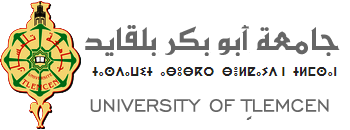في مقصدية اللغة الصوفية- أشعار وحكم أبي مدين الغوث أنموذجا
Résumé: لقد ظل الخطاب الصوفي لفترة طويلة على الهامش، باعتبار أن أطره المعرفية المتعارف عليها تختلف عن شعرية الأدب القديم الذي نسميه "الأدب المعياري" (عمود الشعر)، فهذا الأخير معروف بخصوصياته(حضور العقل، وحضور الإيديولوجية، المناسبة، الوضوح)، أما الخطاب الصوفي فهو على عكس شعرية "الخطاب المعياري"، لأن المتصوفة أهل باطن يعتمدون على الذوق والقلب، مما جعل بنية الخطاب الصوفي تقوم على التبدل والنحول والتغير لأنها تصدر عن معرفة حدسية وليدة لحظتها في حين أن بنية الثقافة الرسمية تقوم على الثبات والاستقرار والشمولية، كما أن أدب المتصوفة يتسم بالغموض وينبني على مفهوم الخرق والانزياح والانفتاح والتحول والتأويل. فرغم كل هذه المميزات التي تجعل من الخطاب الصوفي محل اهتمام الدارسين والنقاد والقراء، فإنّه بقي لمدة طويلة أقل اهتمام بسبب أن الرؤيا فيه أقوى من الرؤية. لكن بمرور الوقت أصبح الخطاب الصوفي يفرض نفسه وقابل لكل القراءات خاصة في ظل المناهج النقدية الحديثة والمعاصرة باعتباره يؤمن بالآخر وبالاختلاف معا، مما جعله يكرس حضوره الفني والجمالي ليتحول من الهامش إلى الاهتمام (المركز). لذلك عدّتلغة الخطاب الصوفي لغة رمزية مجازية ذات دلالات كثيرة قابلة لأكثر من تأويل تتميز بالتخيل والتمثيل والتشبيه، لهذا فهي عينة بلاغية خصبة. حيث أن المتصوفة استخدموا لغتهم واستعاراتهم إشارات ودلالات تختلف عن استعارات ودلالات الأدب والفلسفة والسياسة. ويحاول مقالنا الموسوم بـ"في مقصديةاللغة الصوفية فيأشعار وحكم أبي مدين الغوث "، الرجوع إلى التجربة الصوفية المشكلة للغة التصوف بوصفها تكونت من منظور صوفي خاضع لسلسلة من الاستعدادات والممارسات الخاصة، أي النص يتكون بعد إجهاد واستعداد روحي على رأي ابن عربي. الكلمات المفتاحية: مقصدية/اللغة/ الصوفية/ أشعار/ حكم/ أبو مدين الغوث. The Purpose of Sufi Language - Poems and vision of Abu Madian Al-Ghouth as a Model Dr. Hamra Housny : [email protected] DjelfaUniversity Sufi discourse has remained for a long time on the sidelines, considering that its generally accepted frameworks of knowledge differ from the poetry of ancient literature which we call "normative literature". The latter is known for its peculiarities (the presence of reason, the presence of ideology, occasion, clarity), As for Sufi discourse, it is in contrast to the poetry of “normative discourse”. Because the Sufi mystic people depend on taste and heart, which made the structure of Sufi discourse based on change, transformation, and change because it comes from intuitive knowledge generated from its moment while the structure of formal culture is based on stability, stability and inclusiveness. Also, the Sufism literature is ambiguous and is based on the concept of displacement, openness, transformation and interpretation. Despite all of these characteristics that make Sufi discourse of interest to scholars, critics, and readers, it has long remained ignored because the vision in it is more than just a vision. The language of Sufism, this alphabet, which is read only by those who see things with the heart, it represents an important space that should be carefully considered for everyone who intends to define the semantic and cognitive textual approach, in its courtyards, the Knights of Sufism fell as martyrs of their ideas, and their visions of customary taste because of this language, some have also been accused of heresy and others with disbelief and disobedience to religion. But through time, the Sufi discourse imposed itself to all readings, especially in light of modern and contemporary critical approaches, as it believes in the other and in difference together. This made it dedicate its artistic and aesthetic presence to be from a margin to an interest (center). In addition, the Sufis used their language and metaphors as signs and indications that differ from the metaphors and meanings of literature, philosophy and politics. This text refers to the Sufi experience that constitutes the language of Sufism because the language was formed from a Sufi perspective subject to a series of special preparations and practices; the text is made after fatigue and spiritual preparation for any Arab son. Keywords:Muqdasiyah / language / Sufism / poems / rule / Abu Madian Al-Ghouth.
Mots-clès:
Publié dans la revue: مجلة أنثروبولوجية الأديان
Nos services universitaires et académiques
Thèses-Algérie vous propose ses divers services d’édition: mise en page, révision, correction, traduction, analyse du plagiat, ainsi que la réalisation des supports graphiques et de présentation (Slideshows).
Obtenez dès à présent et en toute facilité votre devis gratuit et une estimation de la durée de réalisation et bénéficiez d'une qualité de travail irréprochable et d'un temps de livraison imbattable!


